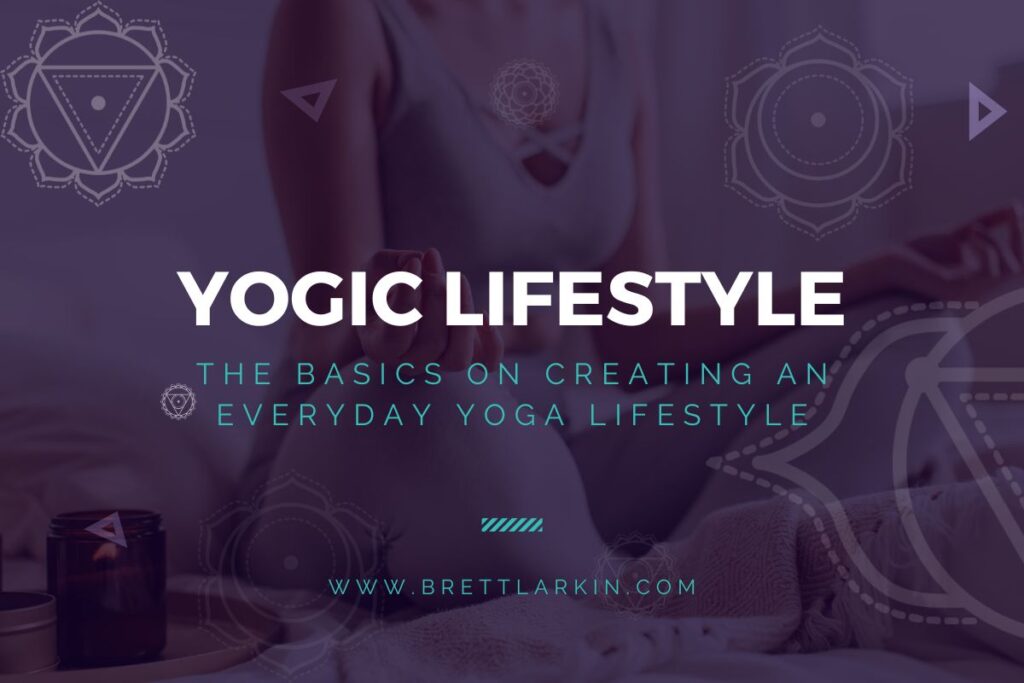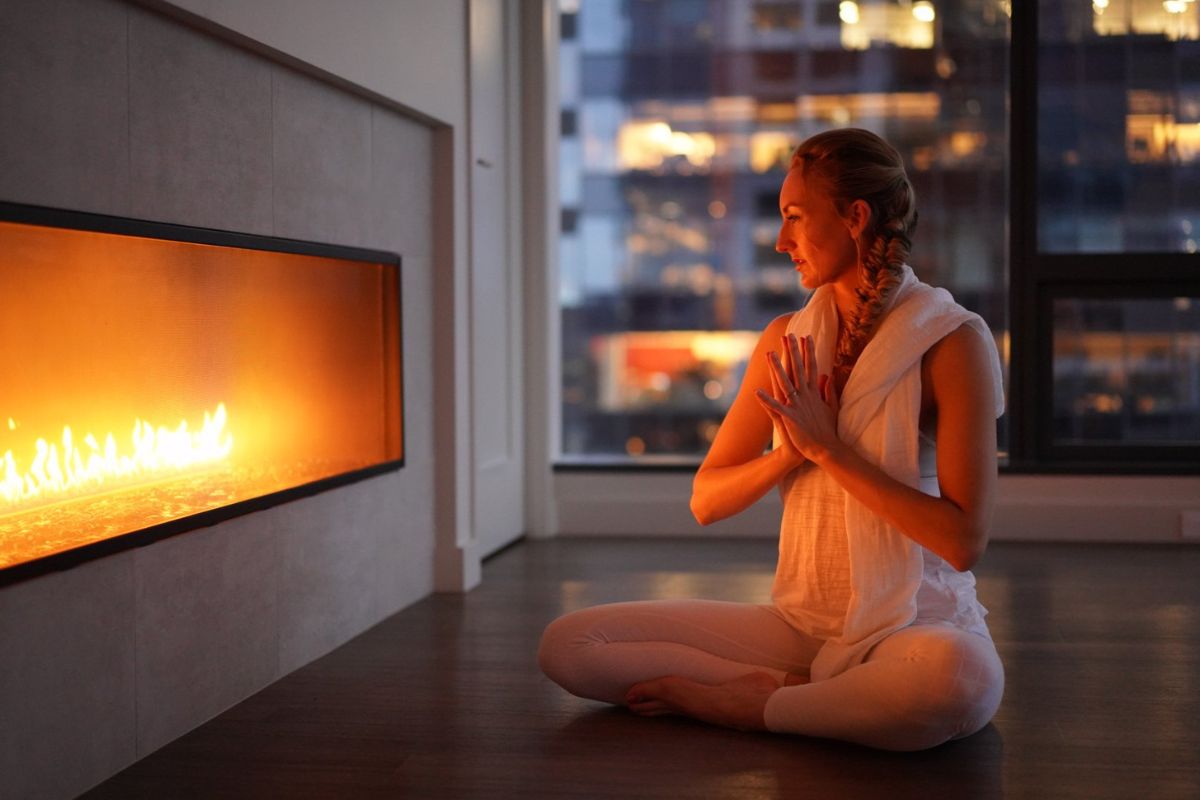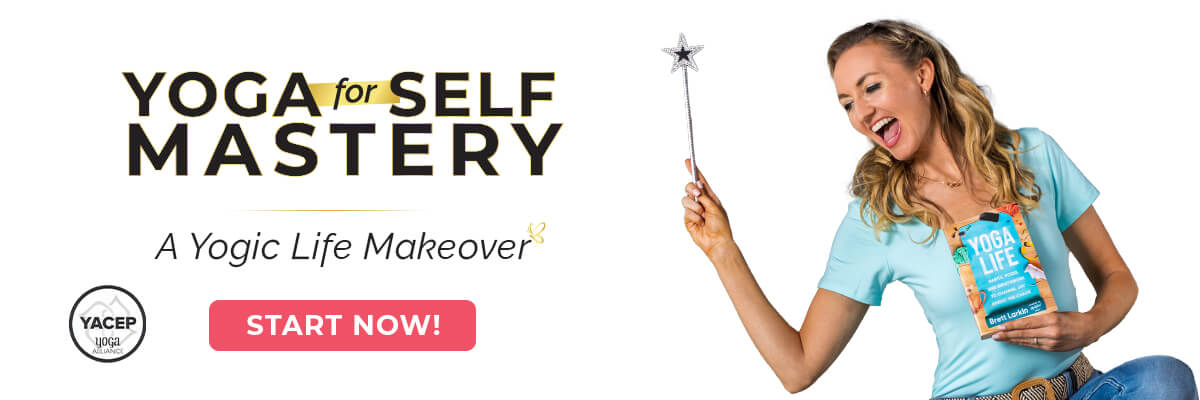Has modern life got you down? It’s all go, go, go. Achieve all the things, don’t ask for help, think this, no think that…..UGH HOW EXHAUSTING!!!! The modern world requires you to go fast and never get out of your head, which eventually will take a toll on your mind AND body. This is not how a person is meant to live!!
Have you ever thought about making lifestyle choices in accordance with yoga philosophy to combat these aspects of life? Not sure how? Keep reading…
What is a Yogic Lifestyle?
Contrary to popular belief, a yoga practice is not just about physical exercise.
If you aren’t familiar with Patanjali’s Yoga Sutras, this is a good place to start. Why is this a good place to start your journey? Because the key concepts of a Yogic Lifestyle are mapped out in them!
In Pada II of the Yoga Sutras, 2.1 to be exact, it is stated that Kriya Yoga (yoga in action) embraces that pain and pleasure both bring enlightenment. Accepting pain from a friendly teacher is critical. As is having a strong level of self awareness and faith in a higher power.
But what does that mean and how can you achieve this? Start with the Yamas and Niyamas.
Yama = A moral code of restraints or rules of what not to do. There are 5 Yamas:
- Ahimsa – Non-Violence: cultivate kindness
- Satya – Truthfulness: know your truth in your bones
- Asteya – Non-Stealing: open your heart/cultivate generosity
- Brahmacharya – Chastity: balance and moderation in all things
- Aparigraha – Non-Coveting: feel abundant/cultivate gratitude
Niyama = Ethical practices you should do to have a peaceful existence. There are also 5:
- Saucha – Purity: embrace simplicity/stay lighthearted
- Santosha – Acceptance: love what is
- Tapas – Discipline: charge your mind with tranquil willpower
- Svadhyaya – Self Study: Observe outwardly, reflect inwardly
- Ishvara Pranidhana – Surrender: let go and trust
These principles bring harmony to your life and in combination with knowledge of the rest of the 8 limbs bring you closer to the 8th limb, Samadhi (transcendence) and are the key concepts to making yogic lifestyle choices.
Vedic Traditions
According to the World History Encyclopedia, the Vedas (including the Rig Veda, Sama Veda, Yajur Veda, and Atharva Veda) are a compilation of spiritual knowledge and spiritual practices compiled into religious texts about Hinduism. They are believed to have always existed, but were not committed to writing until The Vedic Period (c. 1500 – c. 500 BCE).
There are four different sections in each Veda and the last section, the Upanishads, is where yoga comes in, discussing the Brahmans’(spiritual/intellectual leaders of Hindu society) practices and beliefs.
From these teachings yoga philosophy became more concentrated in Patanjali’s Yoga Sutras. And, as you now know, these sutras and the 8 limbs of yoga aren’t all about asana, or physical postures. They are more a process of self-transformation through discipline.
Now, let’s get a little more specific on what a yogic lifestyle might look like and how to use these concepts to achieve it.
Goals of a yogic lifestyle
The ultimate goal of living a yogic lifestyle is to live in alignment with yogic practices and principles so that your outlook on life and the way you live brings peace and equanimity. You want to be able to approach your daily life with calm and balance. Some of these goals look like:
- Liberate your mind: Free your mind of the ego and negative constraints woven within. The negative thoughts will never fully go away, but a yogic lifestyle enables you to shift your mind from them quickly.
- Hack your nervous system: Learn to use your energy wisely by being able to shift focus smoothly so that you can look at or approach a situation calmly and collectively. Gain techniques to move out of your sympathetic nervous system(fight/flight/freeze) and stay in your parasympathetic nervous system(rest/digest).
- Approach life consciously: Don’t just “go through the motions” , have awareness of all things around you and be mindful of your roles and interactions within.
Benefits of the yogic lifestyle
A yogic life brings inner peace and balance physically, emotionally, and energetically. What does that look like?
- Self-awareness: Being aware of your emotions and WHY you are having them. A better connection to your physical body.
- More calm/less anxiety: Mindfulness and meditation lower anxiety levels leading to a more calm approach to life and less stress leading to feeling better physically and emotionally.
- Connection: Not just your mind/body connection but connection to a greater sense of purpose for yourself or achieving Samadhi (enlightenment), or having a Kundalini Awakening. Also your connection with others, you are able to look at others actions through a broader lens making it easier for you to understand their actions and be more accepting.
Tips for creating a successful yoga lifestyle
One of the best ways to start living a yogic lifestyle is to deepen your yoga practice. No, that doesn’t just mean grabbing your yoga mat and heading to that popular hot yoga class every other day, but with all concepts of yoga. The best way to begin is by exploring your Ayurvedic constitution and how to balance your doshas. This will guide your personal yoga practice, both on and off the mat.
The other way is to meet like minded people that want to go deeper in these practices too in my 200-hr training. Or you can go further with things like the chakras or my Yoga for Self Mastery to see how energetics and self care affect your day to day life and yoga hacks to create balance.
That said, here are some basics on creating an everyday yoga lifestyle.
Eat like a yogi

Brahmacharya: chastity or moderation in all things. While it would be ideal to practice purity (Saucha) in your diet and make only healthy food choices, it’s not very practical is it? Do your best to eat pure, organic, whole foods. Maybe even follow a vegetarian or ayurvedic diet.
But, when you are in a situation where this is just not possible, use moderation. Don’t gorge yourself on fast food, or use the fact that it’s your only option as an excuse to order the largest, greasiest thing on the menu. Be disciplined(tapas) and moderate yourself.
Although you want to cultivate a healthy diet, consume minimally processed and healthy foods, don’t beat yourself up if you had a cheeseburger. Accept what is (Santosha) and use it as an opportunity for self-study (Svadhyaya) to look at your habits, determine why you chose that option and what you could do differently next time.
Sleep like a yogi
Ahimsa: non-violence. Cultivate kindness and never hurt yourself or others. You might think, how does that apply to sleep?! In the modern world you often deprive yourself of sleep. Are you staying up watching TikToks? Are you so exhausted and know your body needs rest but refuse to give it because you have something you need to “achieve”? That’s not being very kind to yourself is it? It’s also harmful to your body and mind to deprive yourself of rest. Science is learning more and more about how sleep is essential to a healthy body.
Be kind to yourself and give your body what it needs to stay healthy by making sure you are getting a proper amount of good quality sleep. If you’re stuck in a bind and know you won’t get decent sleep….thank you babies….incorporate a Yoga Nidra (literally means yogic sleep) into your nightly routine. I’m telling you, a yoga nidra can be a LIFE SAVER!!
Try my guided yoga nidra class on YouTube to get started:
Love like a yogi
All ten of the Yamas and Niyamas either come from or lead us to a place of love. The Yamas can guide you on ways to give love, and the Niyamas can guide you on ways to receive or hold love, regardless of whether that love is self-love, love for those around you, or universal love.
Ishvara Pranidhana (surrender) being the most important of these principles when it comes to love applies to all aspects of your life but directly relates to your devotional practice as well.
Incorporate Bhakti Yoga, or the yoga of love and devotion, into your life. Bhakti Yoga is the path to Samadhi through intense love and devotion to God (or whatever you view your spiritual energy/higher power/source to be). Create a comfortable yogic home environment so that you can practice meditation and prayer. That could look as simple as a yoga fitness room or yoga mats in every room. Or, it could be as much as a room dedicated to prayer and practice with all you need to achieve these things.
Think like a yogi
Use your meditation practice to cultivate mindfulness and lead you to non-binary ways of thinking. Nothing is as simple as good or bad. This is also where practicing the Niyamas can play a big role:
- Saucha – use positive mantras and meditations to cultivate a focused mind
- Santoshoa – practice gratitude daily to lead to a more compassionate lifestyle
- Tapas – have self-discipline over negative thoughts to maintain happiness
- Svadhyaya – ask yourself the hard questions to shape who you are and who you want to be leading to inspiration
- Ishvara Pranidhana – trust that all things are working in your favor throughout your daily life, even when it feels like they really aren’t.
I’ve talked a lot about the 8 Limbs, Yamas and Niyamas through this post, but there is so much more that can be said about them. I’ve got classes that go so much deeper on these topics and will expand your knowledge in my Uplifted Membership. This membership also includes over A THOUSAND yoga classes and meditations. You’ll find specific ones for each of the Yamas and Niyamas within.
I encourage you to have grace and compassion when transitioning to a yoga lifestyle. It can’t all happen at once and this is not just a you do it once and you’ll be that way forever kinda thing. It is a lifestyle, meaning a way of being for LIFE. Use your daily yoga practice combined with mental focus and discipline to achieve this. You’ll get there, keep a calm mind and trust the process.
Next Steps
- Take my History of Yoga Course to learn all about yogic principles and how they are applied to daily life!
- Order my Yoga Life book for a practical guide to applying yogic principles to your life and constitution.
- Check out my Yoga Philosophy knowledge hub for more inspiring content
- Join Uplifted for exclusive content that you can access right from the app. Take a deep dive into your practice with me this year!
Experience 3 Training Videos from Inside My 200-Hour Online YTT

YOU MIGHT ALSO LIKE
- What is Kriya Yoga? The Philosophy and Practice
- Uddiyana Bandha: Tapping Into Your Deep Core
- 4 Reasons Hasta Bandha Is Essential To Your Yoga Practice
- Vitarka Mudra: What It Is and How Do You Use It?
- Shakti Mudra: What It Is and How Do You Do It?
- Garuda Mudra: What It Is and How Do You Use It?
- Kali Mudra: What It Is and How Do You Do It?
- Shunya Mudra: What It Is and How Do You Do It?
- Varuna Mudra: What It Is and How Do You Use It?
- Vayu Mudra: What It Is and How Do You Use It?
- Samana Vayu: The Energy of Balance & How to Access It
- Apana Vayu: The Energy of Release & Surrender
- Udana Vayu: The Ascending Wind
- Prana Vayu: The Breath of Vitality
- Vyana Vayu: The Energetic Secret to Flow



















